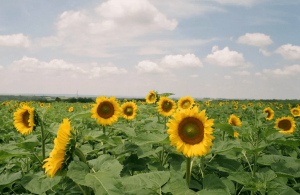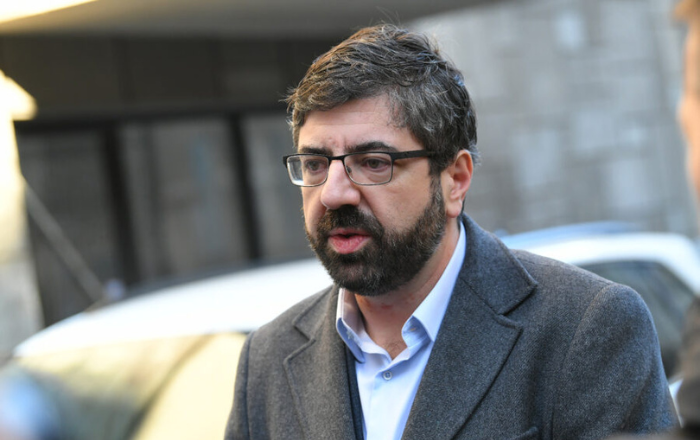There has been an increasing interest in the “green wave,” which has been spreading across Europe in the last couple of years. It all began with the electoral successes of the Greens in Germany, Austria, and Scandinavia, and the regional public became interested in green parties in particular after the Možemo! platform’s victory in Zagreb and the growth of their popularity at the national level. In Montenegro, the green United Reform Action led by Dritan Abazović is part of a coalition that has overthrown the authoritarian regime of the Democratic Socialist Party.
Ecological protests and the growing importance of environmental issues for the citizens of Serbia have to a great extent changed the party scene of Serbia. Green parties in Serbia began to “sprout” just like mushrooms after rain. Some naturally emerged from the environmental movement and many years of activism, while others are trying to use the right moment for green political entrepreneurship. Also, the ruling party has been trying to confuse the public and snatch part of the votes from real green opposition actors by creating satellite green parties right before the April elections.
Some of the new Greens
The Alliance 90/Greens of Serbia, led by Đura Vlaškalić, a long-time prominent member of the Novi Sad board of the Democratic Party, who left the party in 2014, recently came to the attention of the domestic public. In Vlaškalić’s extensive biography, one can find that he held a series of important public offices in the Autonomous Province of Vojvodina in the previous period. He is also the founder of the Faculty for Service Business in Novi Sad. He was its director from 2002 to 2005, while he was the director of the Faculty of Law and Business Studies in Novi Sad from 2006 to 2007.
However, Vlaškalić’s political career is even more interesting. In the middle of 2021, the news appeared in the domestic public that the Alliance 90/Greens of Serbia had been founded, with Vlaškalić as its head. Not only did this party translate and take over the name of the German political party Bündnis 90/Die Grünen, but it copied their logo almost entirely.
That is why the European Green Party issued an official statement, emphasizing the following: “We acknowledge recent reports about fake green actors using the visual identity of the European Greens and other European Green parties but are convinced that citizens will recognize legitimate Green actors themselves, actions speak louder than the populism of opportunist actors.”
It’s also interesting that the Alliance 90/Greens of Serbia is registered as a political party. How? Namely, the Conservative Party, which was already registered in the Register of Political Parties and whose legal representative is Đura Vlaškalić, changed its statute, changed its name, and became the Alliance 90/Greens of Serbia overnight. Thus, today, under number 88 of the Register of Political Parties, there is the Alliance90/Greens of Serbia, instead of the Conservative Party. The address, legal representative, and founding date are all still the same. Only the name is different.
Although the Conservative Party has almost never run in the elections, the new name seems to have given them new hope. This party has already run in the local elections in October in Negotin, and they announced that they would run in the upcoming parliamentary elections. The number of their premises throughout Serbia is growing rapidly, proving that finances are not a problem for them. All this raises doubts that the main role of this party is to snatch part of the votes from the true green options in Serbia and thus ensure the long-term survival of the Serbian Progressive Party in power.
The same can be illustrated by the example of another newly formed green party in Serbia. The European Green Party was formed prior to the local elections in Šabac at the end of 2019, which is registered as the party of the Russian national minority. They won 1.07%, i.e., 667 votes in the Šabac city elections so they managed to win a spot on the city council. Not only is there almost no Russian national minority in Mačva (the party is registered in Šabac), but if one takes a look at the list of candidates from this party, one can conclude that they don’t have a single person belonging to a Russian national minority among themselves.
Trading green parties: nothing new
If we go back just a little, we will see that the abuse of green parties is not so much a new phenomenon on the domestic political scene. The emergence of green parties in Serbia followed the liberal-elitist logic of political competition. At one point, political entrepreneurs noticed a lack of nominally green and environmental options in the political market. Without building the movement and exclusively through media appearances and green branding, parties being offered to voters came to life. Such an approach to politics has opened the door wide for Ideological malleability and party-hopping.
Additional dynamics were brought about by the Law on Political Parties from 2009, which prevented the registration of new political parties unless they had substantial financial support. Green parties that were formed prior to passing the Law became a means of political horse-trading and score-settling and were often satellites of the parties of the government from that time that used them as a backup option in the event of a party’s failure to register.
The Greens of Serbia is a pioneering green political option on the domestic party scene. A few green parties that were later on changing their name and colors, came to be from this party. The Greens of Serbia was founded in 2007 and after a few years of existing on the margins, the party ran in parliamentary elections in 2012 on the list “Choice for a better life – Boris Tadić”. In that way, the Greens of Serbia secured themselves parliamentary status, winning a spot on the city council.
Before the parliamentary elections in 2014, a conflict erupted within the Democratic Party when the former president Boris Tadić confronted Dragan Đilas, president of the party at that time. Tadić split the Democratic Party and formed the New Democratic Party (NDP). Considering that there was not enough time for the registration of the new party, Tadić untied with the Greens of Serbia in order to run in the elections. Formally, the Greens of Serbia only changed the statute and changed the name of the party to “NDP-Greens”, so that Tadić could run in the elections while avoiding collecting signatures for the registration of his new party.
At that time, the NDP did not have a program or a statute, but it ran in the elections through the aforementioned legal stunt (in coalition with LSV, LDP, and a few other smaller options) and won 5,7% of the votes. Immediately after the elections, a “divorce” took place, and the NDP-Greens recovered the name Greens of Serbia, and the NDP changed its name to the Social Democratic Party.
That is not where the interesting journey of the Greens of Serbia ended. In the 2016 parliamentary elections, they ran on the SPS-JS list and managed to win one seat, while in the 2017 presidential elections, they supported the candidacy of Aleksandar Vučić. Currently, this party is on the political sidelines again.
The mentioned wedding and the divorce of the NDP and the Greens of Serbia brought another “green” party to the domestic political scene. Some members of the Greens of Serbia who were not satisfied with the behavior of president Ivan Karić left the party and founded the Green Party. Given that, as previously mentioned, it is almost impossible to collect enough money to notarize 10,000 signatures for the registration of a new party, the Green Party decided to take the easier path. They registered as a party of the Slovak national minority, which made their job easier in two ways.
Not only was it enough for them to collect 1,000 signatures for registration, but the same number of signatures was enough to allow them to run in the elections, instead of 10,000 signatures, as is the case for the parties of the majority nationality. In addition, they do not have a legally defined threshold for entering the National Assembly, but a natural threshold. At the time this party was founded, the census was 5%. The Green Party ran in the next elections in 2016, and with only 23,000 votes, it managed to become a parliamentary party, allegedly representing the Slovak national minority.
In the next parliamentary elections in 2020, which were boycotted by the majority of opposition parties, they were running in the coalition for Zoran Živković’s New Party on the “Let the masks fall” list. This time, they forgot about their Slovak origin, so they did not run as a national minority party. The coalition won only 7,805 votes, finishing in the penultimate place out of 21 candidate lists. The Green Party has recently joined the Alliance90/Greens of Serbia.
Read more on how the regime created new fake green organisations to confuse voters: LINK.
Green parties on a silver plate
The emergence of the Party of Freedom and Justice is also interesting. Dejan Bulatović’s already registered Green Ecological Party – The Greens (GEP) changed its statute in the middle of 2019 and renamed itself the Party of Freedom and Justice, and Dragan Đilas was elected president of the new-old party. Bulatović has a really rich political career, which largely resembles the careers of football players, who change the colors of their jerseys in the transition period.
Thus, in twenty years, his political journey took him from being an anti-communist and a monarchist to a green activist, and finally, a red social democrat. From 1994 to 1997, he was a member of the SPO, and from 1997 he participated in the founding of the Christian Democratic Party of Serbia, of which he was a member until 2000. After the changes that took place after the 5th of October, and after, according to his words, getting “severe beatings from Đinđić’s thugs”, he left Serbia and founded the Movement for a New Serbia in France, whose program goals included, among other things, rebuilding the monarchy in Serbia, which Bulatović said was violently abolished by the red dragon, called communism. “
Upon his return to Serbia, in 2012, he became a councilor in the municipal assembly of Šid, through the DS list. He soon became the president of GEP and already in 2016, he formed, together with Ivan Karić’s Greens of Serbia, the United Green Front. The United Environmental Front soon disintegrated, after the Greens of Serbia decided to support the presidential candidacy of Aleksandar Vučić.
GEP was running in the Belgrade elections on the list “Let’s liberate Belgrade – DS, Nova, SDS, GEP Greens”, but they remained below the threshold. Already in the middle of 2018, they formed the Civic Bloc 381 with Saša Janković’s PSG, but at the end of the same year, they left this alliance. GEP’s political path ended in March 2019. Then they changed their name to the Party of Freedom and Justice and Dragan Đilas came to the position of president, while Dejan Bulatović became the new vice president of the party.
The Greens and “the Greens”
All of the above leads to the conclusion that it is necessary, at the time when it’s hip to be green, to separate the authentic environmental movements that have been pointing out the issue of environmental protection for years, from the parties that are trying to collect cheap political points.
Organizations that have been fighting for years against investors who endanger our mountains, rivers, and cities, have managed to make environmental issues mainstream. At the same time, the supposedly green parties, without any serious activism, are trying to collect cheap political points by rebranding themselves. In this way, they essentially do damage to the authentic environmental movement – citizens who are not up to date with political events so diligently can be deceived, and environmental topics are used to collect cheap political points. Therefore, until the April elections, we can expect a tide of new “green” actors.
This article was written by Luka Petrović and initially published on January 25th 2022 on portal Mašina: LINK.
More from Ne davimo Beograd:
Lazovic to attend EP session: I expect them to call for rerun of Serbian elections
MP of the opposition Green-Left Front Radomir Lazovic said that, in its resolution on the Serbian elections, he expects the European Parliament (EP) to voice its position that elections must be repeated at all levels in Serbia, especially in Belgrade, where the opposition was robbed of its clear victory.
We Demand Responsibility and Restraint in Solving the Crisis in the North of Kosovo
We call for responsibility and restraint in solving the crisis in the north of Kosovo, in the Banjska monastery, so that the conflict does not escalate or lead to a new tragedy. We condemn provocations and violence from any side, and demand a thorough investigation.
Setting the Community of Serb Municipalities and membership in the EU as necessary first step towards the reconciliation of the two peoples
It is a real tragedy of our society that the same people who led to the fact that Kosovo is not de facto part of the constitutional order of







